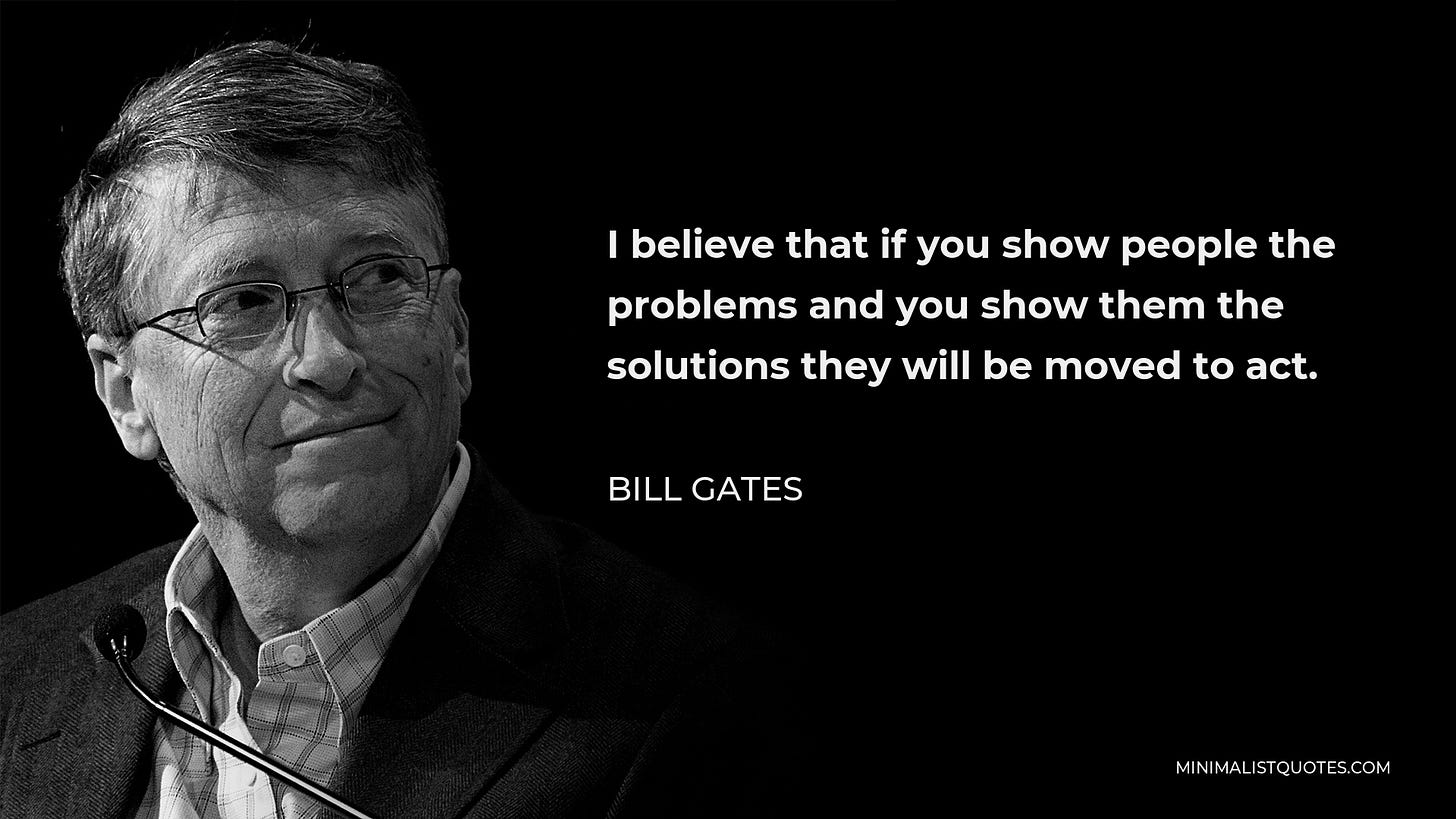When Reality Speaks Louder Than Convictions
"Show people the problems, then show them the solutions: they will be moved to act." - Bill Gates
An inspiring quote from Bill Gates... though one might wonder if he applied it to Windows, given the legendary stability of the operating system in the 90s! 😉
But beyond this playful jab, this quote raises a fundamental point in our approach to product development and digital transformation: the necessity of starting with real problems rather than presumed solutions.
The Mirage of Obvious Solutions
How many times have we heard in product meetings: "We absolutely need this feature, it's obvious!"? This gut feeling from business teams, however sincere, can be a dangerous trap.
Let's take a concrete example: a company decides to launch a new reporting dashboard for their business clients. The business team is convinced that detailed graphs and Excel exports are THE must-have features. Six months of development later... usage is minimal, and clients still call support for basic information.
What happened? We forgot to observe what was actually happening on the ground.
Reality as the Source of Truth
Engineering leadership teaches us that true innovation doesn't come from meeting rooms but from careful observation of real-world usage. This approach, far beyond simple technical monitoring, involves:
Observing users in their real context
Identifying actual friction points
Measuring the impact of problems
Validating hypotheses before any major development
A Telling Example
Picture a B2B marketplace experiencing declining conversion rates. The product team immediately suggests adding more search filters and redesigning the interface. But when observing the reality:
Sellers spend 70% of their time answering the same questions
Buyers primarily abandon due to missing key information
Most transactions require multiple email exchanges
The real solution? A dynamic FAQ system fed by actual exchanges and a much simpler lead qualification workflow.
From Observation to Action
This ground-first approach radically transforms how we work:
Product teams become digital ethnographers
Developers understand the business context
Business teams confront their intuitions with reality
KPIs reflect real problems rather than disconnected objectives
Building a Culture of Continuous Improvement
Beyond methodologies and frameworks, it's the culture of continuous improvement that makes the difference. In our modern organizations, feedback loops are already well integrated into our product practices. The challenge now is to extend this culture across the entire organization:
Encouraging each team to observe and question their practices
Promoting rapid experimentation and learning
Valuing instructive failures as much as successes
Sharing learnings between teams
This approach helps avoid the "big project that will solve everything" syndrome in favor of continuous, measurable improvements.
Moving Forward Together
What's particularly encouraging today is seeing the emergence of a truly collective digital strategy carried by all teams. It's no longer solely the responsibility of an isolated "digital department" but a transformation that involves every stakeholder in the company. The bonds between product teams and business teams are becoming stronger and more natural, creating an essential synergy for successful transformation.
In a world where digital transformation is on everyone's lips, let's not forget that true transformation begins with actively listening to the field and building bridges between all company expertise. Problems speak to us; we just need to learn to listen collectively.
#DigitalTransformation #Leadership #Engineering #Innovation #ProductManagement


